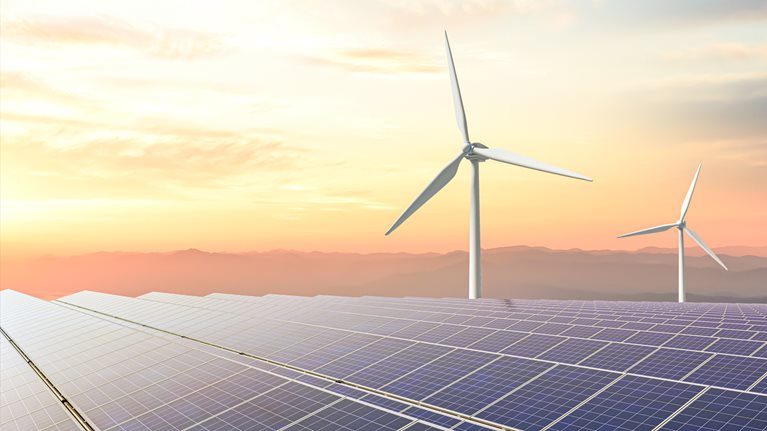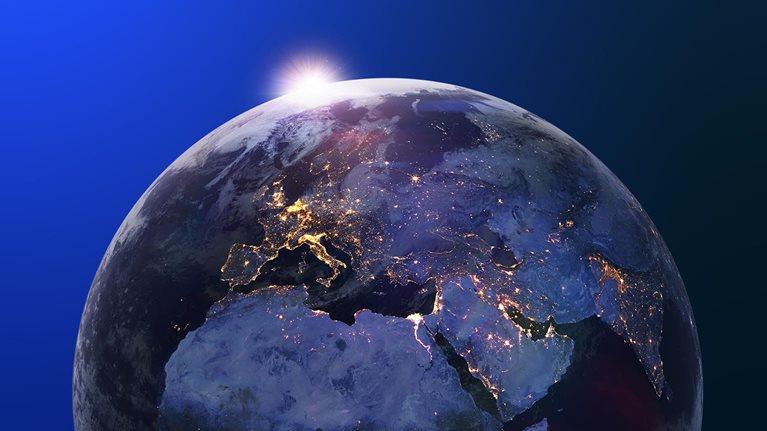The past year has been a tumultuous one for European energy markets. After experiencing extreme volatility and all-time highs little more than a year ago,1 power prices across the continent rose to a nearly unfathomable level last fall. Wholesale prices of both electricity and natural gas nearly quadrupled from previous records in the third quarter of 2022 compared with 2021, creating concerns for skyrocketing energy costs for consumers and businesses (Exhibit 1). Prices have since fallen unexpectedly, thanks in part to warm winter weather.

Such volatility highlights the structural challenges Europe faces as it seeks to transition its energy system away from carbon-emitting fossil fuels. At a time when these decarbonization efforts are boosting electricity demand across Europe, the market is reeling from unprecedented supply constraints. The war in Ukraine, disruptions to nuclear facilities in France, and low output from hydroelectric plants have combined to significantly reduce the continent’s dispatchable power—electricity that can be easily switched on and off. Primarily driven by drought, hydro output was down by 19 percent between January and September 2022 across Europe, compared with the same period in 2021.2 In France, where 32 of the country’s 56 reactors were down for maintenance in September, nuclear energy output has declined by 14 percent over the same period (Exhibit 2).3 Even more destabilizing is the dwindling supply of Russian gas. Prior to the invasion of Ukraine, Russia supplied 30 percent of Europe’s natural gas, a resource that exerts a large influence on electricity prices and is a mainstay of the continent’s power mix. That proportion dropped to 15 to 20 percent in 2022 and is likely to decline further this year.4

At the same time, demand for electricity continues to increase because of decarbonization and electrification throughout various sectors. These structural trends mean that Europeans are using more electricity than ever. Sales of electric vehicles (EVs) and electric heat pumps for buildings and homes, for instance, are both up by more than 30 percent, while demand for electricity in iron and steel manufacturing is up 17 percent.5
As a result, Europe faces the real possibility of shortages in dispatchable power—sources that are critical for balancing loads across the power system and ensuring there is enough electricity available at times of peak demand. To avoid this scenario and replace the dispatchable generation lost from natural gas, nuclear, and hydro, many European utilities have increased coal production, which had been scheduled to drop drastically. A range of stakeholders are also investing in alternative, low-carbon dispatchable-energy sources, such as hydrogen, batteries, demand-side response, and biomass.
Acutely aware of the implications of higher bills for energy consumers, European policy makers and regulators are actively discussing solutions to ease the economic impact of high energy prices and continue to bring down costs for businesses and consumers. Nearly all EU governments are pursuing either direct payments to households or temporary reductions in bills via lower taxes and other levies.6 Additionally, the European Union recently adopted a temporary windfall tax on the surplus profits of fossil-fuel companies and on excess revenues made from surging electricity costs.7 In December, EU energy ministers also agreed to a price cap on natural gas that is triggered when European front-month gas contracts surpass 180 euros per megawatt-hour for three days.8
Although all of these efforts will undoubtedly have positive impacts, the challenges are not likely to end anytime soon. With the frequency of high-intensity heat waves expected to increase, additional outages of nuclear facilities planned in 2023, and further expected reductions in Russian gas imports, we expect that wholesale power prices may not reduce substantially (defined as returning to three times higher than precrisis levels) until at least 2027.9
The future of Europe’s power market: Four key themes
We expect four themes to shape the market’s evolution over the next five years.
1. More and more power
Despite the recent boost in coal generation and new natural gas infrastructure,10 Europe remains committed to its climate-based decarbonization goals. These efforts will stimulate electricity demand in Europe until at least 2030. Between 2021 and 2030, demand will rise by nearly 3 percent annually, up from the annual 2 percent demand increase from 2018 to 2021. Initially, much of this increase in demand will come from the electrification of transport, where demand will rise by a staggering 13 percent annually. After 2030, the use of green or potentially red hydrogen (hydrogen created with nuclear energy) for manufacturing will ramp up substantially. Demand from the manufacturing sector, which requires electricity for electrolysis, will amount to 200 terawatt-hours (TWh) by 2030. In total, absolute electricity use across Europe is expected to increase from 2,900 TWh in 2021 to 3,700 TWh in 2030.11
2. The rise of intermittency
The penetration of wind and solar in Europe’s power mix will grow dramatically. By 2030, these renewable sources, which are critical components of Europe’s decarbonization efforts, are expected to provide 60 percent of the continent’s energy capacity. This represents almost double the share in 2021, or an additional 760 gigawatts (GW) between 2021 and 2030 (Exhibit 3). Yet meeting this challenge will require a massive build-out of new facilities. For example, in Germany, annual new-construction rates will have to triple compared with the 2018–21 period.12 But this won’t be easy—policy makers, regulators, and renewables developers will have to navigate scarcities in supply of both suitable land and talent with needed skills, as well as enduring supply chain issues and shortages of raw materials.13

In addition, because wind and solar generation is subject to natural variations and thus provides intermittent sources of green power, balancing resources (such as hydrogen, batteries, demand-side response, and biomass) will also be required.
3. Not enough dispatchable power
Over the next several years, a gap will develop between peak electricity loads and the dispatchable power capacity that can be switched on to meet it. This shortage is expected to worsen as natural gas, nuclear, and hydro production continue to decline while peak loads increase. By 2035, Europe’s gap will be equivalent to 19 percent of dispatchable capacity, or 116 GW (Exhibit 4). This, however, is a worst-case scenario and assumes no new capacity is built.

Efforts are under way to close this gap with clean sources of dispatchable capacity. Over the past decade, considerable investments have been made in utility-scale battery systems, biomass, and hydrogen. Our model suggests that by 2035, more than 100 GW of battery capacity, five to ten GW of biomass, and 20 to 30 gigawatts of hydrogen electrolyzer capacity will be needed to meet peak loads. Yet these technologies have to be further scaled, with build-outs remaining highly uncertain due to a reliance on supportive regulations, the availability of government incentives, and the need for raw materials that are in short supply, such as lithium ion.14
4. New and evolving rules
Long-term redesigns of Europe’s power market are considered critical to avoiding future price volatility, balancing the needs of consumers and producers, and bolstering investment in new generation capacity. In addition to immediate and temporary measures aimed at lowering prices for energy consumers, European policy makers and regulators are considering several longer-term options to fundamentally reform how the EU energy market operates. Each of these will need to balance the three dimensions of security, affordability, and sustainability:
- Central buyer model. Instead of buyers competing in an open and fluctuating market, a single EU or national regulatory agency would purchase electricity from dispatchable sources at fixed prices under long-term contracts. The agency would then sell this energy to the market at prices that represent an average cost. This model can reduce the effects of price spikes and ensure a direct and consistent supply of power to energy retailers and large customers.
- Decoupled day-ahead markets. Because Europe’s electricity prices are closely tied to the cost of natural gas, energy consumers are unable to reap the economic benefits of low-cost renewables. By separating energy resources with zero marginal costs (such as wind and solar) into one market and marginal cost resources (such as coal) into another, grid operators can prioritize the dispatching of renewables, leaving fossil fuel generation to meet residual demand.
- Capacity remuneration mechanism. To ensure a steady supply of dispatchable electricity when customers most need it, a grid operator provides subsidies to producers based on the forecast cost of keeping power capacity in the market. This ensures a secure power supply and protects consumers from paying for more capacity than necessary.
Although the European power market is experiencing one of its most challenging periods, close collaboration among stakeholders (such as utilities, suppliers, and policy makers) can enable Europe’s green-energy transition to continue while ensuring a stable supply of power. With market uncertainty high, players will need to pay close attention to how they navigate the economics of their investments in wind, solar, and other new generation assets. McKinsey’s work with leading players highlights the importance of building a series of strategic scenarios to model how generation and retail portfolios will evolve under different scenarios. Building optionality in portfolios will be a critical component of thriving in such an unsettled environment.
To request access to the proprietary data and analytics that power our insights, or to speak to our team, please contact us.


